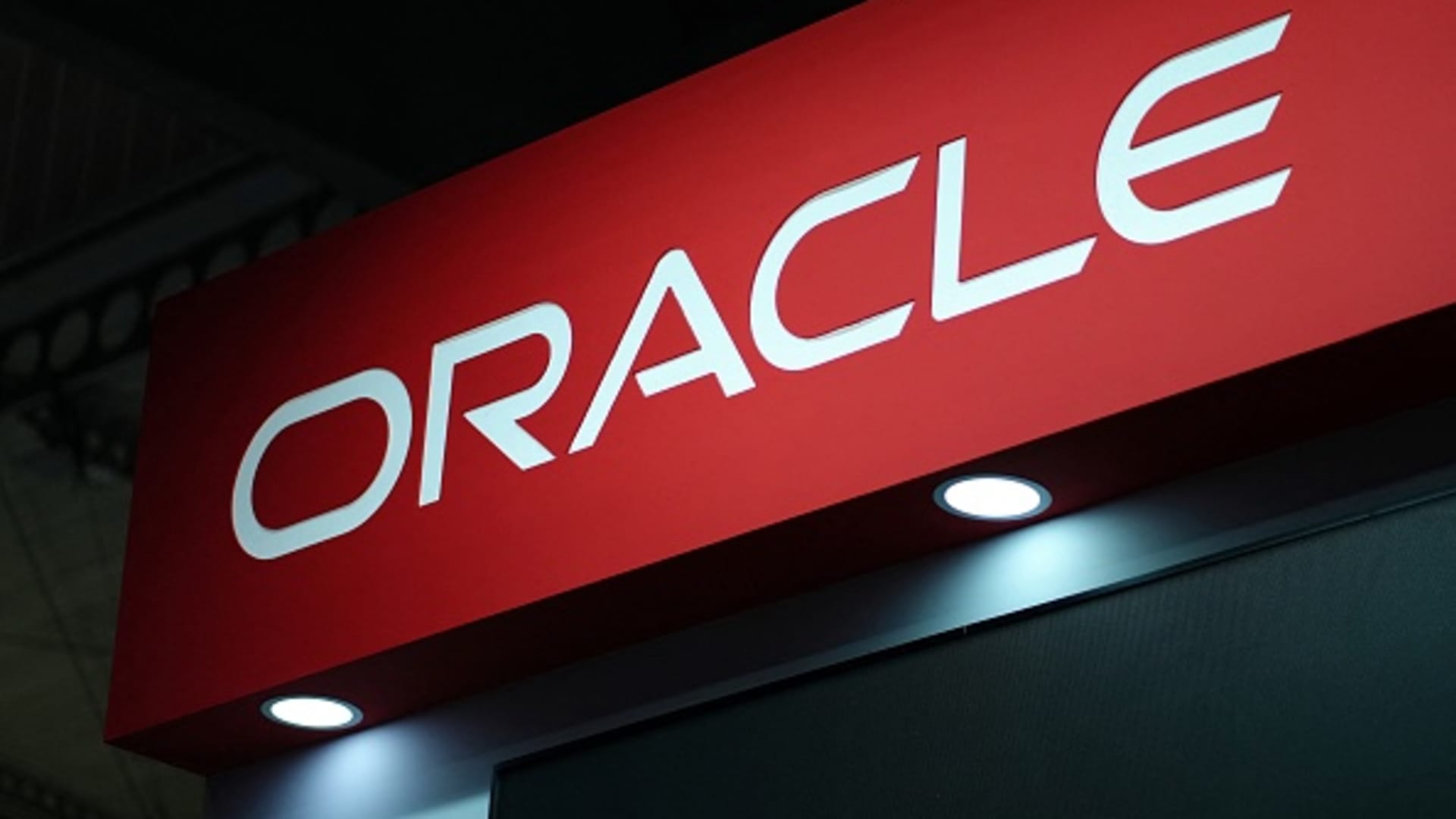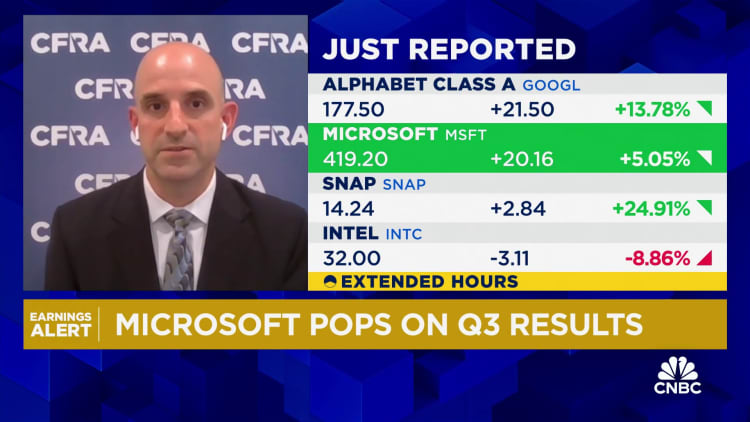

US multinational computer technology company Oracle’s logo is pictured at the Mobile World Congress (MWC), the telecom industry’s biggest annual gathering, in Barcelona on February 27, 2024. The world’s biggest mobile phone fair throws open its doors in Barcelona with the sector looking to artificial intelligence to try and reverse declining sales. (Photo by PAU BARRENA / AFP) (Photo by PAU BARRENA/AFP via Getty Images)
Pau Barrena | Afp | Getty Images
U.S. cloud infrastructure provider Oracle is boosting its generative AI capabilities as cloud competition intensifies and more companies jump into AI.
The AI boom — fueled by the launch of chatbot ChatGPT in November 2022 — is driving an increase in demand for cloud computing services and data centers, as large amounts of data are required in AI model training and the cloud provides access to vast datasets.
Oracle has been introducing generative AI capabilities into its cloud infrastructure and applications to complement the traditional AI already embedded in them.
“The classic AI is very good in terms of detecting patterns or predicting numbers … but you cannot use large language models to predict numbers,” Rondy Ng, executive vice president of applications development at Oracle, told CNBC.
“So we combined the predictive numbering capability with the explained ability in words. So the two together become very powerful and you need both. In the past many years, the number prediction part is already very mature. As part of the product we continue to evolve that and it’s not going to stop. Generative AI is basically the talk of the town right now,” said Ng.
In March, Oracle announced additional generative AI features embedded across applications in finance, supply chain, human resources, sales, marketing, and service. The generative AI capabilities can perform tasks such as generating financial reports and drafting job ads, improving productivity and reducing business costs, Oracle said.
This comes after the firm announced the implementation of generative AI across its technology stack in January.
“We believe Oracle is seeing a renaissance of growth with its AI strategy. [It is] well positioned to be a major beneficiary of the AI revolution,” said Dan Ives, managing director of Wedbush Securities, in emailed comments to CNBC on Wednesday.
“The data Oracle sits on and installed base gives Ellison & co. a major advantage to monetize the software layer of AI,” said Ives, referring to Oracle’s chairman and chief technology officer Larry Ellison.
As firms talked up the generative AI story last year, technology providers have to be one step ahead of the cycle, research firm Gartner said in a report on April 17. “They are bringing GenAI capabilities to existing products and services, as well as to use cases being identified by their enterprise clients.”
JPMorgan has said generative AI and AI could drive incremental IT spending and growth across the software landscape. “Many software vendors, including Oracle, have cited benefits from ongoing investments by businesses into AI technologies,” JPMorgan analysts said in a note on March 12.
Oracle might see an increase in revenue and positive impact on its shares if the company manages to capture a larger-than-expected share of the spending into AI, the U.S. investment bank said. Oracle’s shares have spiked 23.74% in the last 12 months, according to FactSet data.
“Generative AI services [are] basically a huge advantage comparing with our competition. The competition needs to work with different companies and cloud providers for that infrastructure and those kinds of services. We actually take everything into an integrated stack, and we consume that,” Ng told CNBC.
AI growth
Oracle has lagged behind rivals like Amazon, Microsoft and Google in cloud infrastructure service market share, according to Synergy Research Group, which ranked Oracle as the sixth-largest service provider, alongside IBM, globally.
While Oracle was late to cloud infrastructure, the AI boom has increased demand for the company’s AI technology. Ellison had in 2018 dismissed cloud computing as “complete gibberish.”
“Oracle did follow the hyperscalers. [I think] that’s not a competitive concern, say for the rest of 2024 and in the foreseeable future. We’re at the very beginning stage of this whole new generative AI journey,” said Ron Westfall, research director at Futurum Group.
CEO Safra Catz said in March the company added several “large new cloud infrastructure” contracts during the fiscal third quarter. Cloud revenue rose 25% year over year to $5.1 billion, Oracle said.
“Interesting to us is management commentary suggesting its Oracle Cloud Infrastructure backlog is significant and AI isn’t yet really driving revenue, which is expected to be more meaningful in FY25,” said Deutsche Bank analysts on Mar. 12.
Ellison said in March that a Salt Lake City data center that Oracle is building can fit eight Boeing 747 airplanes nose-to-tail.
Laying out future market opportunities, Ellison said he sees more national and state government applications being run on platforms like Oracle Cloud Infrastructure, and added that the firm is negotiating sovereign regions with a number of countries.
“Another area [where Oracle] is ahead of the curve, although everybody’s jumping on it, is in terms of offering sovereign AI cloud – a cloud that operates exclusively within a country,” said Westfall.
“More and more countries are going to say when it comes to gen AI, we want all that information, all that data stored within the country.”
In April, Oracle said it would invest more than $8 billion in Japan over the next 10 years to grow cloud computing and AI infrastructure.
Oracle and Nvidia in March announced they will be partnering up to deliver sovereign AI solutions to customers around the world.





